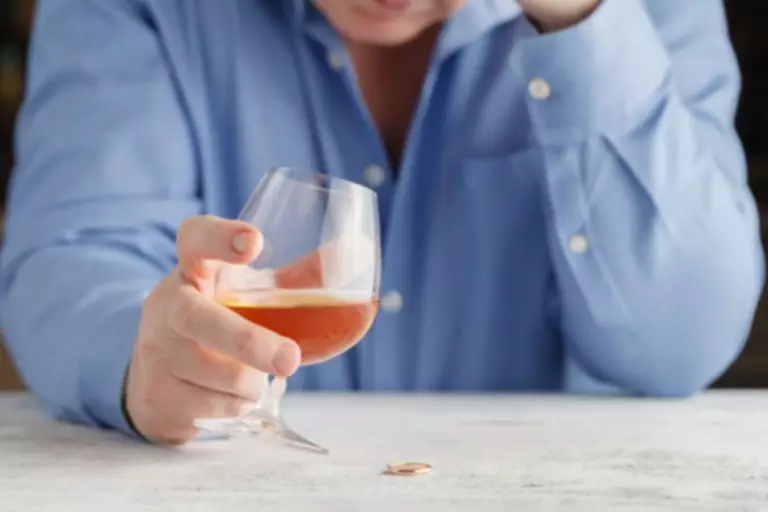
We reviewed 47 prospective studies examining effects of short-term abstinence across six potential behavioral addictions (exercise, gambling, gaming, mobile phone use, pornography use, social media use). Findings of the review showed that there is a paucity of prospective studies investigating abstinence effects in relation to potential behavioral addictions, except for exercise. Across all behaviors, exercise demonstrated the clearest pattern of withdrawal-related symptoms mainly related to mood disturbances. While withdrawal and craving were investigated to a fair extent across the studies, the study of relapse using abstinence protocols is underutilized within behavioral addiction research. Short-term abstinence shows promise as an intervention for some problematic behaviors, especially gaming, pornography use, mobile phone use, and social media use. However, potential counterproductive consequences of abstinence (e.g., rebound effects and compensatory behaviors) were not adequately assessed by the studies, which limits current evaluation of the utility of abstinence as an intervention.

Masturbation prohibition in sex offenders: A crossover study
In a study by McCrady evaluating the effectiveness of psychological interventions for alcohol use disorder such as Brief Interventions and Relapse Prevention was classified as efficacious23. Inaction has typically been interpreted as the acceptance of substance cues which can be described as “letting go” and not acting on an urge. Approach coping may involve attempts to accept, confront, or reframe as a means of coping, whereas avoidance coping may include distraction from cues or engaging in other activities. Approach oriented participants may see themselves as more responsible for their actions, including lapse, while avoidance-based coping may focus more on their environment than on their own actions14. By implementing certain strategies, people can develop resilience, self-compassion, and adaptive coping skills to counteract the effects of the AVE and maintain lifelong sobriety.

Learn From Relapse

Triggers include cravings, problematic thought patterns, and external cues or situations, all of which can contribute to increased self-efficacy (a sense of personal confidence, identity, and control) when properly managed. Altogether, these thoughts and attributions are frequently driven by strong feelings of personal failure, defeat, and shame. These negative emotions are, unfortunately, often temporarily placated by a renewed pattern of substance abuse. It includes thoughts and feelings like shame, guilt, anger, failure, depression, and recklessness as well as a return to addictive behaviors and drug use.
Personality profiles of substance and behavioral addictions
In conclusion, the abstinence violation effect is a psychological effect that impacts those in recovery, as well as those who are focused on making more positive behavioral choices in their lives. By reframing lapses as learning opportunities and teachable moments, cultivating self-compassion, and seeking support, individuals can navigate these challenges more effectively, increasing their chances of leading a healthier lifestyle. An individual progresses through various stages of changes and the movement is influenced by several factors. Stages imply a readiness to change and therefore the TTM has been particularly relevant in the timing of interventions.
- We summarize historical factors relevant to non-abstinence treatment development to illuminate reasons these approaches are understudied.
- For gambling disorder, controlled gambling is increasingly being advocated as a viable goal alongside traditional abstinence treatment goals (e.g., Stea, Hodgins, & Fung, 2015).
- Celebrating victories is a good thing, but it’s important to find constructive ways to appreciate your sobriety.
Phasic responses include cognitive and affective processes that can fluctuate across time and contexts–such as urges/cravings, mood, or transient changes in outcome expectancies, self-efficacy, or motivation. Additionally, momentary coping responses can serve as phasic events that may determine whether a high-risk situation culminates in a lapse. Substance use and its immediate consequences (e.g., impaired decision-making, the AVE) are additional phasic processes that are set into motion once a lapse occurs. Thus, whereas tonic processes can determine who is vulnerable for relapse, phasic processes determine when relapse occurs [8,31]. Specific intervention strategies include helping the person identify and cope with high-risk situations, eliminating myths regarding a drug’s effects, managing lapses, and addressing misperceptions about the relapse process.
Gillian Steckler is a research assistant for Dr Katie Witkiewitz at Washington State University Vancouver where she also attended and received a bachelor of science degree in psychology. One of the most notable developments in the last decade has been the emergence and increasing application of Mindfulness-Based Relapse Prevention (MBRP) for addictive behaviours. Helping clients develop positive addictions or substitute indulgences (e.g. jogging, meditation, relaxation, exercise, hobbies, or creative tasks) also help to balance their lifestyle6. Lapse management includes drawing a contract with the client to limit use, to contact the therapist as soon as possible, and to evaluate the situation for factors that triggered the lapse6. If you are worried that you might be headed for a relapse, you don’t have to wait until it happens to reach out for help.
Genetic influences on treatment response and relapse

Specifically, we focus on recent, representative findings from studies evaluating candidate single nucleotide polymorphisms (SNPs) as moderators of response to substance use interventions. It is important to note that these studies were not designed to evaluate specific components of the RP model, nor do these studies explicitly espouse the RP model. Also, many studies have focused solely on pharmacological interventions, and are therefore not directly related to the RP model. However, we review these findings in order to illustrate the scope of initial efforts to include genetic predictors in treatment studies that examine relapse as a clinical outcome. These findings may be informative for researchers who wish to incorporate genetic variables in future studies of relapse and relapse prevention.
Journal of Behavioral Addictions
Many people can relate to this feeling of guilt when they use a substance, like alcohol or marijuana, after promising themselves they wouldn’t. While relapse doesn’t mean you can’t achieve lasting sobriety, it can be a disheartening setback in your recovery. The Abstinence Violation Effect is a psychological phenomenon that occurs when a person experiences relapse after attempting to abstain from drug or alcohol use. The first step in planning a cognitive behavioural treatment program is to carry out a functional analysis to identify maintaining antecedents and set treatments targets, select interventions. Ark Behavioral Health offers 100% confidential substance abuse assessment and treatment placement tailored to your individual needs.
Depressive mood symptoms and fatigue after exercise withdrawal: The potential role of decreased fitness
- As seen in Rajiv’s case illustration, internal (social anxiety, craving) and external cues (drinking partner, a favourite brand of drink) were identified as triggers for his craving.
- Thus, studies will need to emphasize measures of substance-related problems in addition to reporting the degree of substance use (e.g., frequency, quantity).
- Limit violations were predictive of responses consistent with the AVE the following day, and greater distress about violations in turn predicted greater drinking [80].
- Consistent with this idea, EMA studies have shown that social drinkers report greater alcohol consumption and violations of self-imposed drinking limits on days when self-control demands are high [79].
- Cognitive reframing of lapses, coping imagery for craving and life style interventions, such as physical activity are used to help develop skills to deal with craving and broaden the patient’s behavioural repertoire.
Lapses are, however, a major risk factor for relapse as well as overdose and other potential social, personal, and legal consequences of drug or alcohol abuse. The RP model developed by Marlatt [7,16] provides both a conceptual framework for understanding relapse and a set of treatment strategies designed to limit relapse likelihood and severity. Because detailed accounts of the model’s historical background and theoretical underpinnings have been published elsewhere (e.g., [16,22,23]), we limit the current discussion to a concise review of the model’s history, core concepts and clinical applications. There is less research examining the extent to which moderation/controlled use goals are feasible for individuals with DUDs. The most recent national survey assessing rates of illicit drug use and SUDs found that among individuals who report illicit drug use in the past year, approximately 15% meet criteria for one or more DUD (SAMHSA, 2019a).
RP modules are standard to virtually all psychosocial interventions for substance use [17] and an increasing number of self-help manuals are available to assist both therapists and clients. RP strategies can now be disseminated using simple but effective methods; for instance, mail-delivered RP booklets are shown to reduce smoking relapse [135,136]. As noted earlier, the broad influence of RP is also evidenced by the current clinical vernacular, as “relapse prevention” has evolved into an umbrella term synonymous with abstinence violation effect most cognitive-behavioral skills-based interventions addressing high-risk situations and coping responses. While attesting to the influence and durability of the RP model, the tendency to subsume RP within various treatment modalities can also complicate efforts to systematically evaluate intervention effects across studies (e.g., [21]). Unfortunately, there has been little empirical research evaluating this approach among individuals with DUD; evidence of effectiveness comes primarily from observational research.